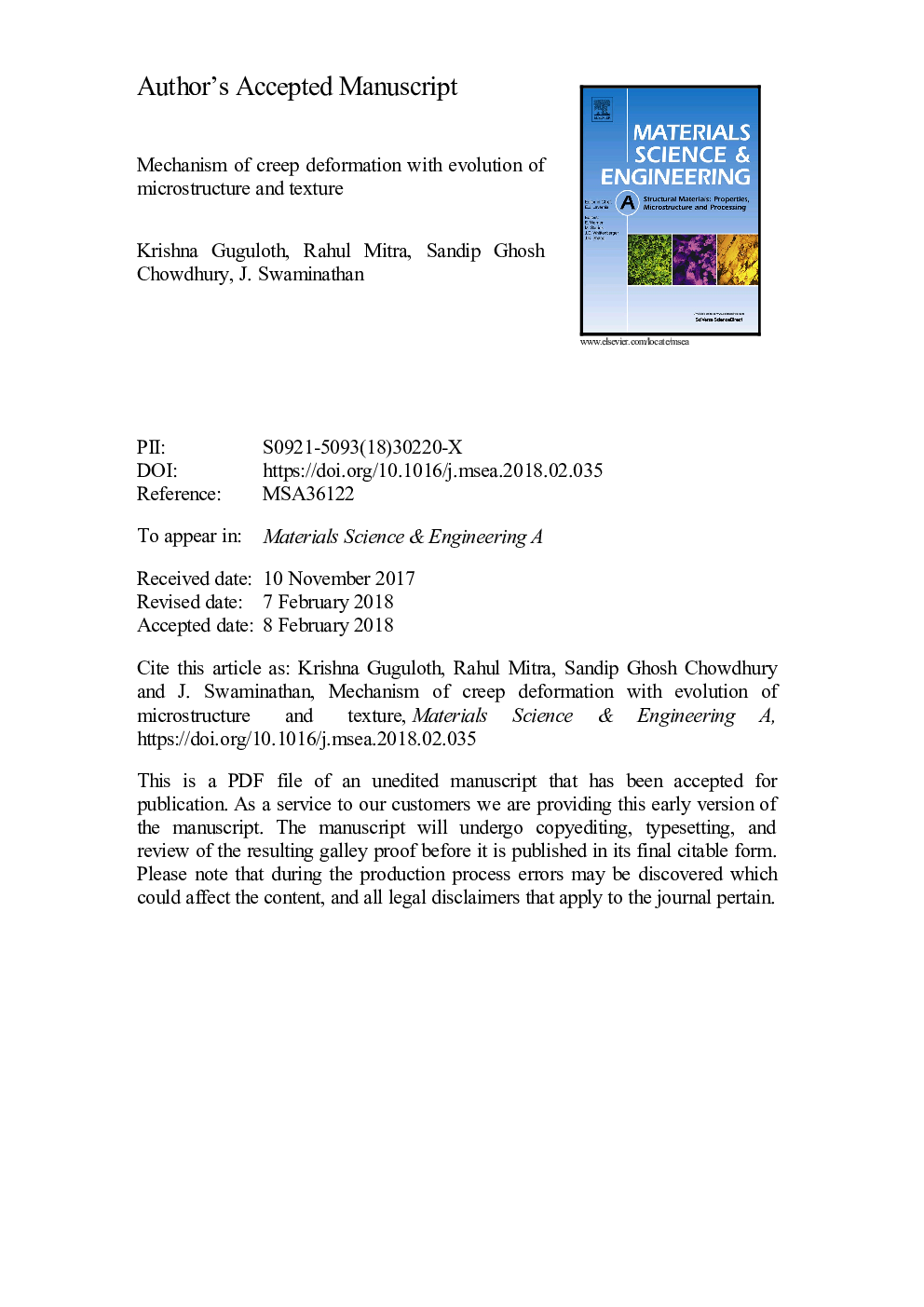| Article ID | Journal | Published Year | Pages | File Type |
|---|---|---|---|---|
| 7972931 | Materials Science and Engineering: A | 2018 | 45 Pages |
Abstract
The creep behavior of Zr-2.5Nb alloy has been studied in the temperature range of 350-450â¯Â°C and stress range of 82-283â¯MPa using constant load creep tests. The creep parameters such as creep activation energy (QC), and stress exponent (n) have been determined following the temperature-compensated power law, and are found to be 247â¯Â±â¯5.0â¯kJ/mol and 5.5â¯Â±â¯0.27, respectively. The value of threshold stress was obtained by varying the stress exponent. This subsequently led to evaluation of the true stress exponent (â¼ 4.02â¯Â±â¯0.19) and true activation energy (â¼116â¯kJ/mol), which is close to that for lattice-self diffusion of zirconium alloys. The results of creep data suggest that rate-controlling mechanism of creep is dislocation climb. Basal component (0002) along transverse direction was observed in the as-received condition, whereas in the sample creep tested at 450â¯Â°C, the components are (0002) and (101Ì
0). Similar type of microtexture evolution has been observed in the samples subjected to creep failure or interrupted creep tests at 450â¯Â°C under a constant stress of 82â¯MPa. The microtexture components observed in the creep tested samples were {0002} <112Ì
0> and <112Ì
0> fiber. As such, there is no change in microtexture components for interrupted creep tests performed at different stages of creep. Microstrucutral observations of the creep tested samples were characterized by using the transmission electron microscopy (TEM) to reveal the dislocation substructures, and niobium rich precipitate particle of β-(Nb, Zr) in the alloy.
Related Topics
Physical Sciences and Engineering
Materials Science
Materials Science (General)
Authors
Krishna Guguloth, Rahul Mitra, Sandip Ghosh Chowdhury, J. Swaminathan,
